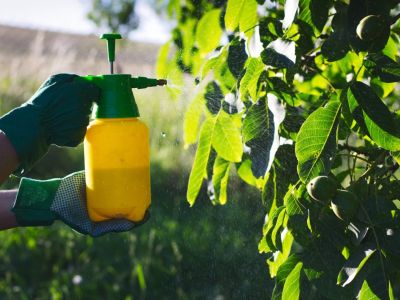What is Foliar Spray?
Foliar spray, although not a substitute for healthy soil, can be beneficial when a plant is suffering from certain nutrient deficiencies. Foliar plant spray involves applying fertilizer directly to a plant’s leaves as opposed to putting it in the soil. Foliar feeding is similar to humans putting an aspirin under their tongue; the aspirin is more readily absorbed into the body than it would be if it were swallowed. A plant takes nutrients through the leaf much quicker than it does through the root and stem.
Types of Foliar Spraying Mixtures
There is a wide variety of foliar feeds to choose from. Usually water-soluble powder or liquid fertilizers are used. If you purchase a fertilizer, be sure that there are directions for foliar application. Foliar sprays are generally less concentrated than fertilizers that are placed on the soil. Many people use natural materials for foliar sprays such as kelp, compost tea, weed tea, herbal tea, and fish emulsion. Comfrey tea is packed with potash and nitrogen and is very easy to make. Fill a blender almost full with fresh comfrey leaves and add water up to 2 inches (5 cm.) below the rim. Blend the leaves until all the comfrey is dissolved. Mix one part comfrey tea to ten parts water for a foliar spray.
Using Foliar Sprays
Foliar feed should be applied in the early morning when the air is cool. Spray plants until you see the mixture dripping from the leaves. To help the foliar application stick to plants, add a small amount of insecticidal soap or horticultural oil. Do not forget to spray the underside of leaves as well. Foliar spray fertilizer is an excellent short-term solution for plants experiencing stress. However, it is always best to build up your soil with plenty of organic matter.
